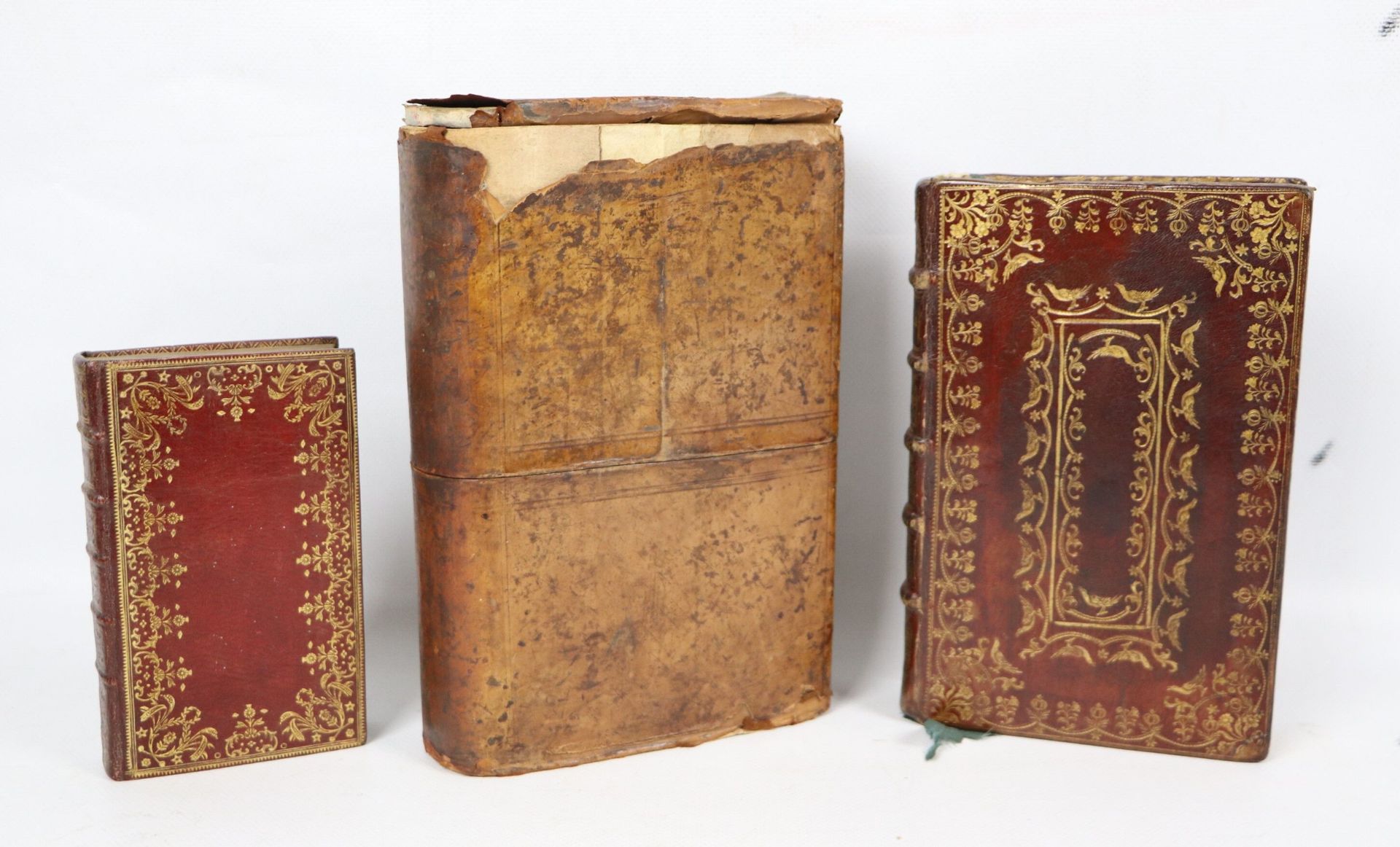Description
BINDINGS. - Set of 2 decorative bindings in morocco. - Horae diurnae breviarii romani. Antwerp, Plantin, 1770. In-8, red morocco, lace with small irons in double framing : flower, pomegranate, pearl fillet, bird, spine decorated with nerves, gilt edges ; worn box, broken (Rel. of the time). Frontispiece, title vignette, 6 plates, all engraved on copper. Binding stained. - De l'imitation de Jésus-Christ. Paris, David, 1731. In-12, red morocco, gilt framed lace, spine with ornate nerves (period). Engraved plates.
79
BINDINGS. - Set of 2 decorative bindings in morocco. - Horae diurnae breviarii romani. Antwerp, Plantin, 1770. In-8, red morocco, lace with small irons in double framing : flower, pomegranate, pearl fillet, bird, spine decorated with nerves, gilt edges ; worn box, broken (Rel. of the time). Frontispiece, title vignette, 6 plates, all engraved on copper. Binding stained. - De l'imitation de Jésus-Christ. Paris, David, 1731. In-12, red morocco, gilt framed lace, spine with ornate nerves (period). Engraved plates.
You may also like
